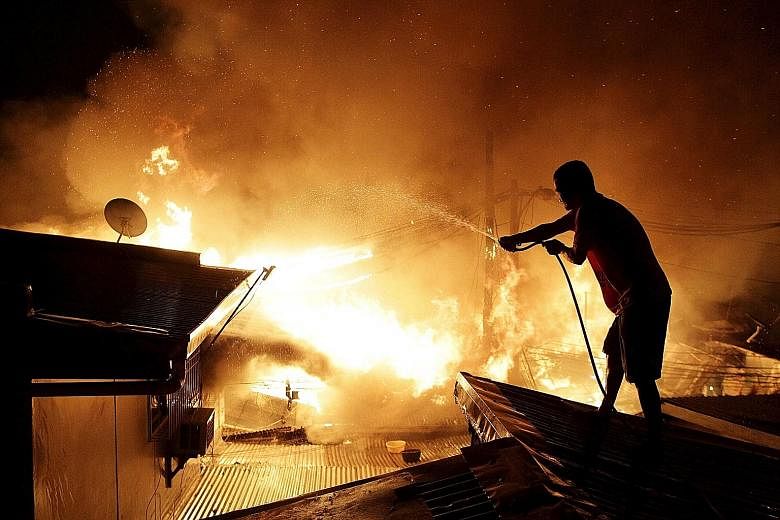Health officials in the Philippines are pressing for a ban on all firecrackers, as more than 800 people suffered injuries from New Year's Eve revelries.
Such a drastic measure to save limbs and lives, however, will likely face heavy opposition in a nation where greeting the new year in a rambunctious - and often deadly - fashion is deeply part of its history and culture.
In a news conference yesterday, Health Secretary Janette Garin reported that 839 people were treated for severed limbs or fingers and eye injuries caused by firecrackers since Dec 16.
One man - Mr Ronald Vericio, 45, of Santa Mesa district in the capital Manila - was earlier reported to have died when, already drunk, he lit and then hugged a dynamite-like firecracker, branded "Goodbye Philippines", just after midnight on Friday.
The health department had been hoping that this year's toll would be lower than last year's, after a government scare campaign and a crackdown on banned firecrackers.
It had also hoped that fewer people would set off firecrackers amid a downpour that drenched much of metropolitan Manila and nearby towns and cities late in the evening of Dec 31 till early Jan 1 .
The final tally, however, will likely be as many as last year's 850 cases. As in previous years, health officials will stop monitoring casualties by Jan 5.
Dr Garin said a disturbing trend has been that victims are getting younger. Among those injured, 458 were children, up from 440 last year. Of the 350 people injured because they mishandled a particularly lethal firecracker known as the "piccolo" - banned, but popular because it is cheap - 267 were children, mostly between seven and eight years old.
Dr Garin said a law pending in Congress banning the sale of all firecrackers not meant for public displays should bring these numbers down. "We really need to ban firecrackers," she said.
She conceded, though, that Congress may not be able to pass the law, as it is an election year.
"Our lawmakers are already on the campaign trail. We'll have to wait for the next Congress."
Firecracker makers are lobbying hard against a ban, she said.
She also acknowledged that it would be difficult to sell a firework ban to the public. "It's in the culture," she said.
Four out of five Filipinos are Catholic, but they follow the Chinese tradition of setting off ear-shattering firecrackers during New Year's Eve to ward off bad luck.
One firework trader, Janice, 24, who declined to give her full name, told The Straits Times: "They can't stop all of it. Public firework displays won't be enough.
"You know how Filipinos are. They like to show off, and setting off the loudest and brightest firework display in their neighbourhood on New Year's Eve is one of the few times they can do that."

